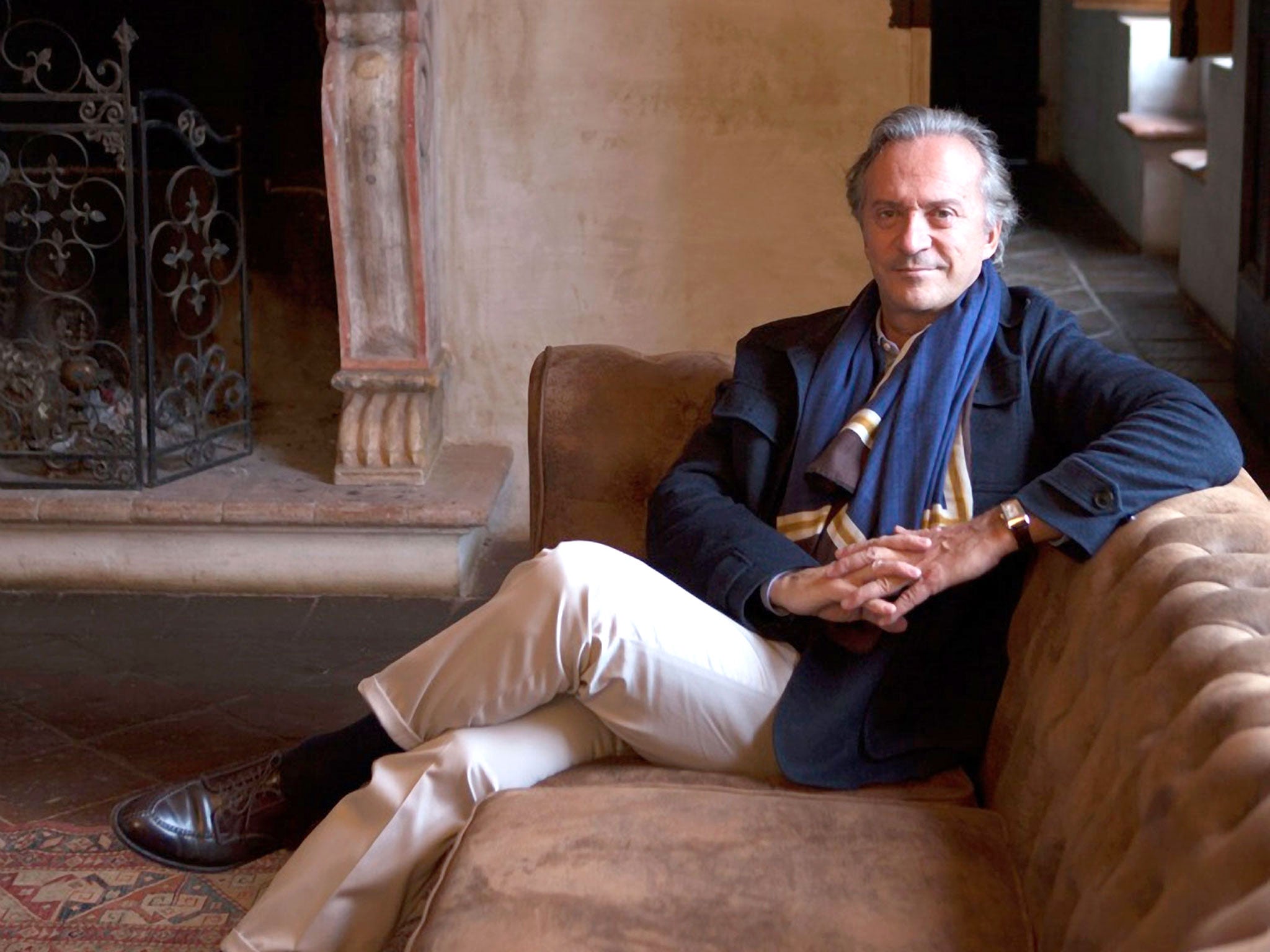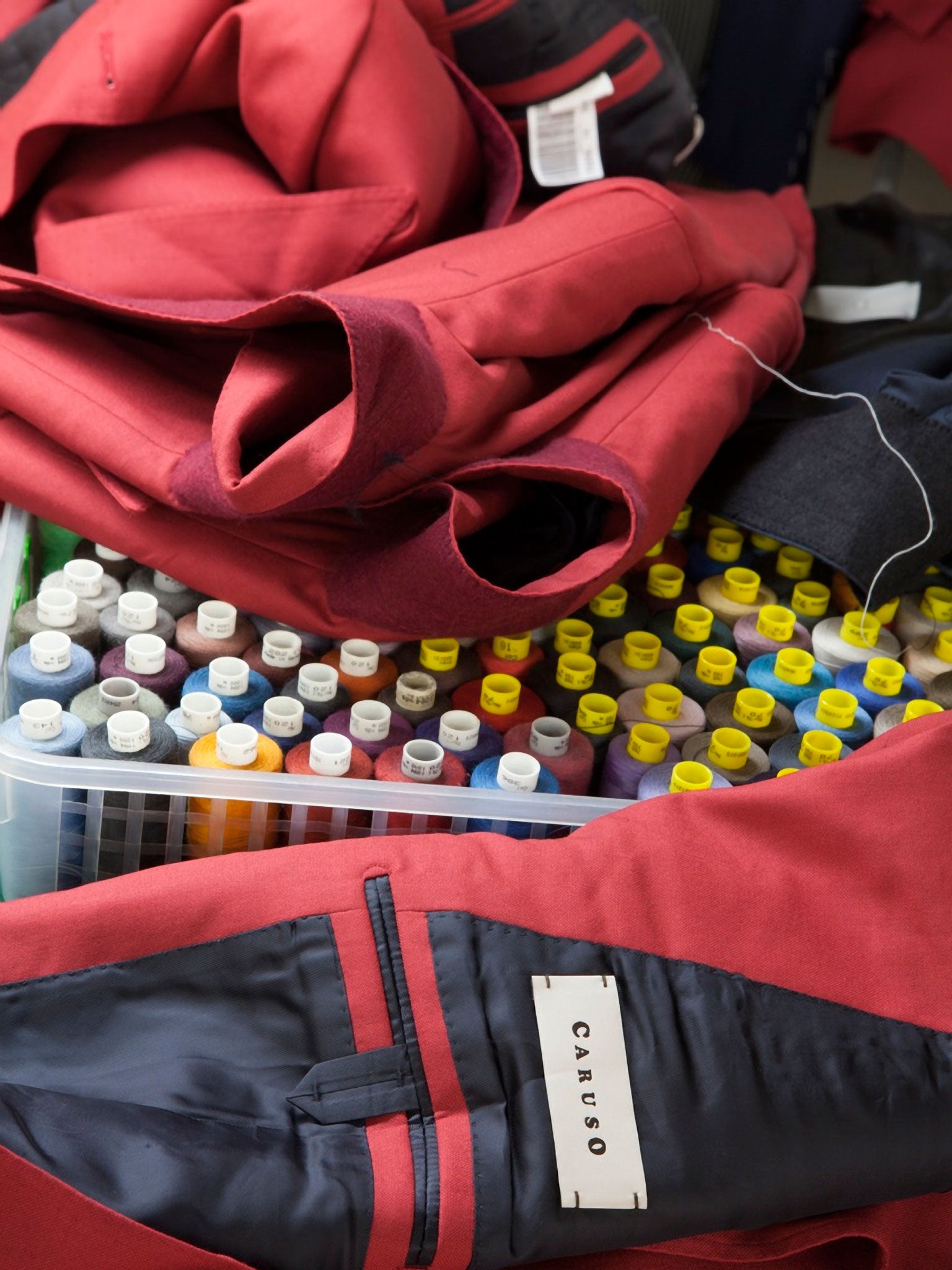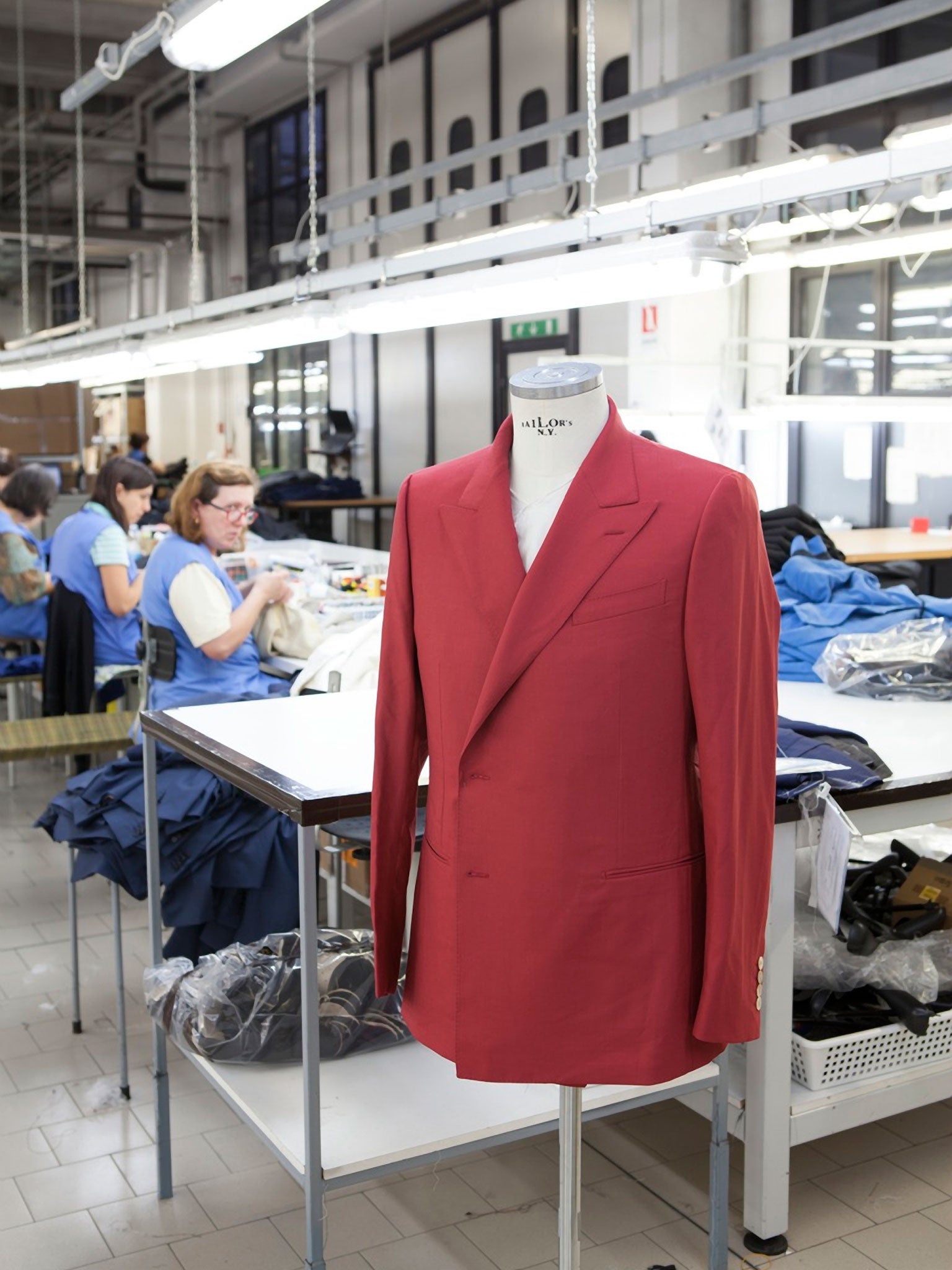Umberto Angeloni interview: The connoisseur behind the Caruso brand is raising tailoring to an art form
As well as being chief executive of Caruso, Angeloni is the overseer of a much greater fashion territory

Your support helps us to tell the story
From reproductive rights to climate change to Big Tech, The Independent is on the ground when the story is developing. Whether it's investigating the financials of Elon Musk's pro-Trump PAC or producing our latest documentary, 'The A Word', which shines a light on the American women fighting for reproductive rights, we know how important it is to parse out the facts from the messaging.
At such a critical moment in US history, we need reporters on the ground. Your donation allows us to keep sending journalists to speak to both sides of the story.
The Independent is trusted by Americans across the entire political spectrum. And unlike many other quality news outlets, we choose not to lock Americans out of our reporting and analysis with paywalls. We believe quality journalism should be available to everyone, paid for by those who can afford it.
Your support makes all the difference.Who would you expect to be the chap at the beating heart of Italian menswear – the top-quality stuff that costs a fortune in Paris and New York shops – and where would you expect to find the centre of his kingdom?
You might assume him to be a big-name designer, a Valentino or Gianfranco Ferré, and his HQ to be a spanking, fashionably half-empty, glass cathedral of a shop in the centre of Rome or Milan. You might be surprised to find the guy is, in fact, a softly-spoken, 60-something gourmet called Umberto Angeloni, and that his executive lair is a modest town in a region best known, not for clothes, but for dry-cured ham.
Angeloni is chief executive of the Caruso brand, makers of soft, unstructured suits and jackets, which are sold to the well-heeled jet-setter. But he's also the overseer of a much greater fashion territory that gives him a finger in a thousand sartorial pies. For he is Italy's leading fashion industrialist.
Angeloni used to be the grande formaggio of Brioni, the Roman couture house which invented the male fashion runway. He married into the family, steered its fortunes for a quarter-century, then sold his interest in 2007 and used the money to buy Caruso, when it was just a garment manufacturer, in Soragna, a modest town 32 kilometres from Parma. He took over as CEO in 2009.
Walk into the Fabbrica Sartoriale Italiana, as his factory is called, and you're in the midst of a bustling production line. Three hundred men and women, half the total workforce, operate in the jackets and coats section alone, working with amazing dexterity and speed in a communal origami of scissoring, folding, machining, lining, sewing, chalking, reinforcing, pocket-attaching and ironing, constantly sweeping lengths of material across the work surface.
They make 450 high-quality suits each day – that's over 2,000 a week, or 100,000 a year. Most employees work from individualised instructions on a computer before them. Alongside their hi-tech endeavours sit seamstresses in blue overalls, stitching hanger-loops that read "Hand-made in Italy", threading needles by eye and saliva like in the old days, heads bent over their work like Vermeer's lacemaker.

The man behind this powerhouse of industry is not here. He's probably having lunch – perhaps at a favourite restaurant, the Antica Corte Pallavicina, with its famous subterranean cave of ham flitches hanging from the ceiling. Signore Angeloni, the most sophisticated man you could meet in a dozen lifetimes, enjoys his food. He's a bon vivant and connoisseur of many things, from clothing to wristwatches, but is potty about Parma ham – at least about culatello, made from the fillet or loin of the pig's hind leg, a speciality of Soragna.
I had three meals with the genial clothing boss, and he called for culatello at each one, remarking on the texture, the aroma, the colour and flavour of each slice, urging his guests to try different versions of what, to the untrained palate, tastes much the same. He reckons Soragna has the best culatello in the world. But then he reckons the town (pop. 4,800 with one hotel, some shops and a 14th-century castle, the Rocca Meli Lupi) is, broadly speaking, the cultural centre of Italy. Wasn't Verdi born just 30 kilometres down the road? And Toscanini, he came from Parma. And the first Ferraris were made in – well, in the same region, Emilia-Romagna…
This romanticising of his workplace prompted him to market his company with a sweet promotional drama called The Good Italian. In it, a young couple travelling in the countryside suffer a bicycle puncture and ask for help at a lonely farmhouse, from which strains of Verdi can be heard. Inside they meet a chortling voluptuary (played by the veteran actor Giancarlo Giannini) who welcomes them, sits them down, feeds them plates of culatello, and fixes up the trendily-shirted Englishman with a proper suit. It ends with the tag-line: "In menswear, do as the Italians do."
I drag Mr Angeloni away from the subject of food, to ask: just how experimental is his factory? "Caruso started as a shop," he says. "Raffaele Caruso from Naples set up a tailor's shop in Soragna, and it evolved into a very modern facility, with 600 staff, specialising in research and development for men's tailoring. It was always experimental, but not as a fashion designer experiments with the whimsical or seasonal or trendy. Caruso has always evolved its tailoring technique, using technology, studying how new materials could be made, experimenting with the male silhouette."

Heavens. Has the male silhouette changed a lot in 50 years? "It's become a question of getting closer to the idea of a man's body. The suit used to cover the deficiencies of the body; today it should show more of the man underneath."
What do the R&D department – 20 per cent of the workforce – do all day? Can there really be new textiles to discover? And new stitching techniques?
"Of course," he replies, stifling the words "you dolt". "In 2016 we're launching a series of suits made of 100 per cent camel hair. Camel used to be confined to very heavy coats, like those worn at a polo match. Loro Piana was able to separate the finest camel hair from the coarse stuff – it's like cashmere, but less expensive. At Caruso, we developed a series of different uses for it – in suits and jerseys. And because of changes in the knitting and weaving and spinning industry, we now have blends that weren't possible before. Like Trio, which blends silk, mohair and wool, to make a fabric which doesn't crease or break apart, has a natural sheen, holds together very well and is soft to the touch."
Is his ambition to design the world's finest suit, or the world's best design laboratory? He shrugs. "We already have the best design and experimentation laboratory in Italy – and, in clothing and fashion, that normally means 'in the world'. But there's no such thing as 'the best suit', because there's no perfection in evolution. Three years from now, they'll have evolved a bit more. But evolution comes from society – we travel much more, men have started to experiment in more informal parts of the wardrobe, with colour, shapes, fabrics…"
Angeloni's main innovation has been to make Caruso a brand in its own right: posh upmarket menswear for the young and wealthy – wool safari shirts, cotton dungarees, silk reefer jackets, perfect for the passeggiata. The 2016 autumn/winter collection is a riotous extravagance of "astronaut" whites, blue satin jackets, silk scarves, malachite pyjamas, striped and lozenged knitwear and Sea Island cotton fabrics from Jamaica.

In the dazzling new Caruso shop in Milan, the décor is styled to make the shopper feel he's backstage at an opera, surrounded by ropes and pulleys and flats. The actual garments are stunning: an alpaca wool coat for €1,900; a stunning fox fur for the male peacock in your life, a snip at €14,000. There are 100 per cent cashmere tuxedos for €2,600, and a fabulous Count Dracula opera cloak for €5,900.
Despite his obvious love of the camp, the playful and the capricious, Angeloni is strict about the classic suit. "Any colour in a suit must be very subtle," he says, "maybe a small stripe or a windowpane but nothing more." Suits with checks? He looks pained. "It's possible, but they will be mostly for the outdoor. You get the greatest variety of colour in a tweed, if you look closely enough, but it's not for the city. Colour doesn't work with formal attire."
He talks about his other obsessions, like his love for single-malt scotch whisky, which he adores (and likes to drink in the morning – "only superfine whiskeys, of course, in very small quantities, with a clear fresh palate and before any food, that's how you appreciate the finest") and his 20 wristwatches for different occasions or times of day, and his choice of the perfect sporting gun – Lebeau-Courally, a Belgian make – when hunting boar.
Where, I ask, does his fascination for perfection and correctness come from? "I think family has much to do with it. My mother was very fond of French wine and champagne. My father was a judge, very keen on etiquette, speech and body language. He would criticise you for pointing, or raising your voice for no reason. But having a fascination, a love for good things, for the best?" He shrugs. "It's just being the Good Italian." Ah yes.
Join our commenting forum
Join thought-provoking conversations, follow other Independent readers and see their replies
Comments